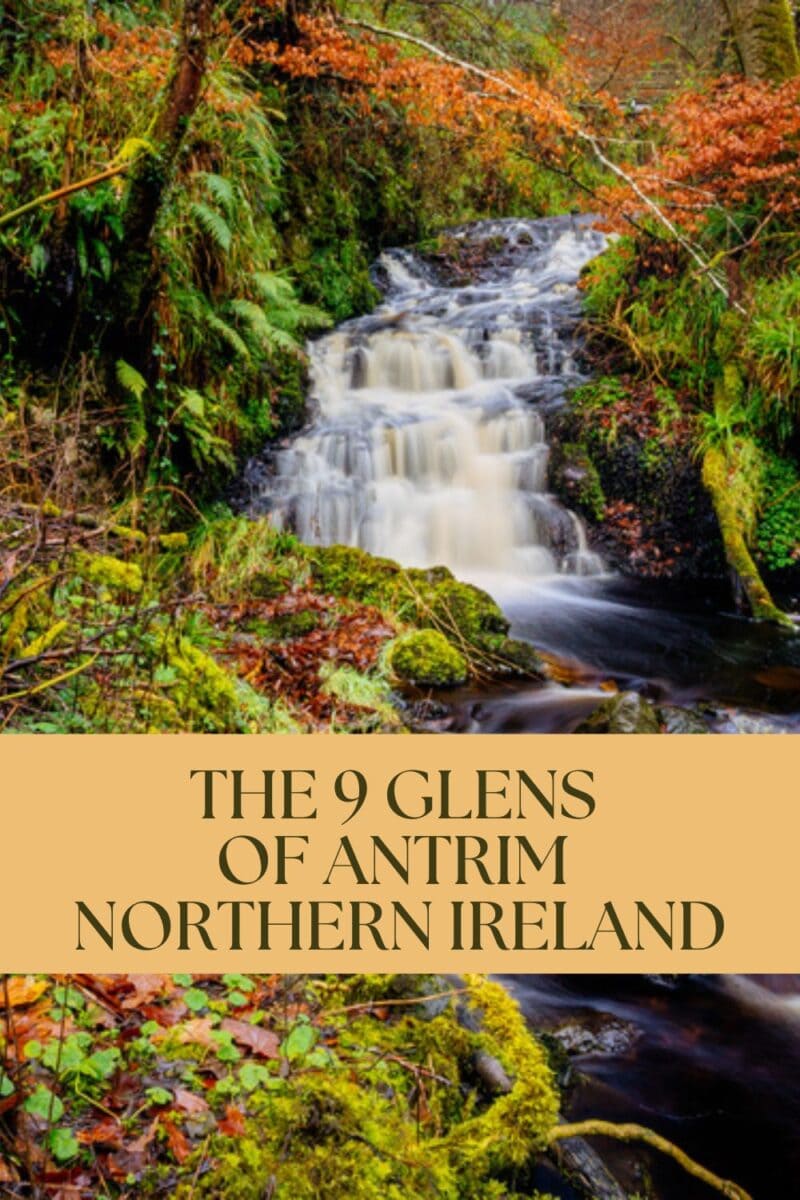Stunning 9 Glens of Antrim Northern Ireland’s Causeway Coast
The Glens of Antrim, are known simply as The Glens here in Northern Ireland. The Antrim Glens are located (not surprisingly) in County Antrim, Northern Ireland. Touring and visiting the Nine Glens of Antrim is something that many tourists to N. Ireland miss as they are so busy trying to see the Giant’s Causeway or the Carrick-a-Rede Bridge.
The Glens of Antrim, are known simply as The Glens here in Northern Ireland. The Antrim Glens are located (not surprisingly) in County Antrim, Northern Ireland. Touring and visiting the Nine Glens of Antrim is something that many tourists to N. Ireland miss as they are so busy trying to see the Giant’s Causeway or the Carrick-a-Rede Bridge.
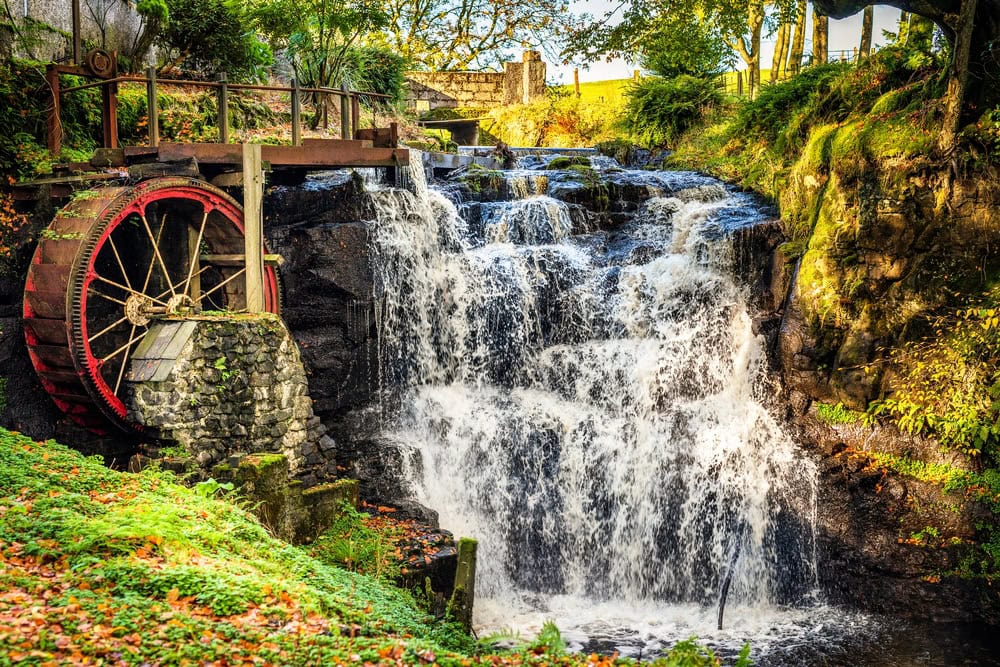
Nestled along Northern Ireland’s stunning Antrim Coast Road lies the enchanting Nine Glens of Antrim, Each glen boasts its own unique charm and natural beauty, offering visitors a glimpse into the picturesque landscapes of this breathtaking region. From the sandy shores of Carnlough Beach to the rugged cliffs of Glenariff the glens are truly a magnificient sight.
Known as the “Queen of the Glens,” Glenariff is a must-see destination with its cascading waterfalls and lush greenery, while the derelict railway in Ballymena offers a glimpse into the area’s rich history. Whether you’re looking to soak in the tranquil surroundings or embark on an outdoor adventure, the Nine Glens of Antrim have something for everyone to enjoy.
Planning a trip to Ireland? – Here’s everything you need to know about getting here
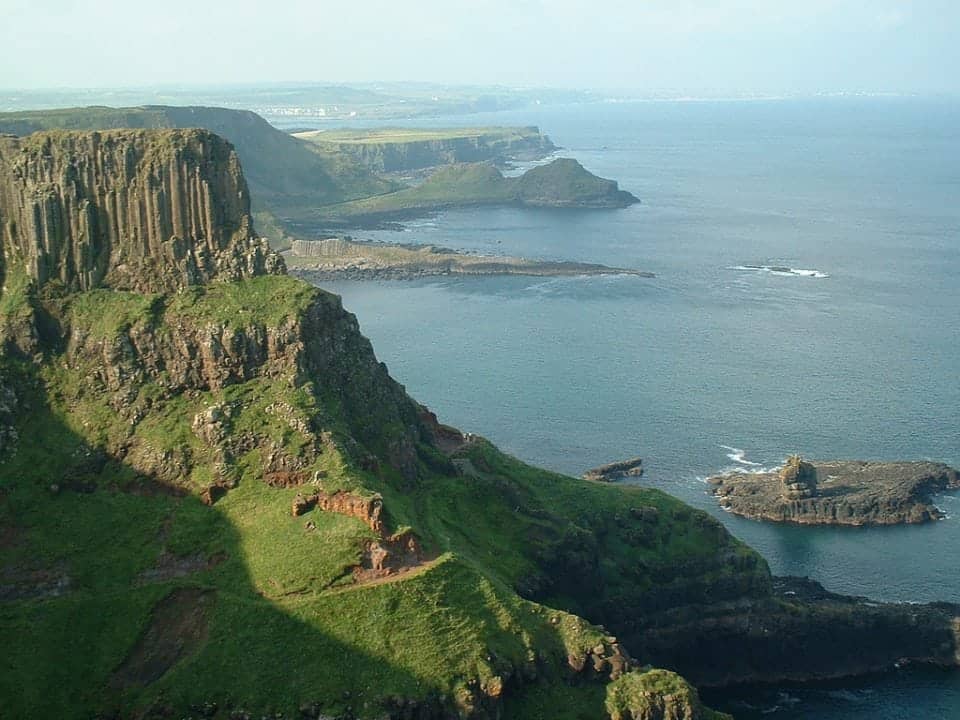
Xyuandbeyond is reader-supported. When you buy through links on our site, we may earn an affiliate commission. You can read my privacy policy here.
101 Landmarks in Northern Ireland
If you are visiting Northern Ireland (or Norn Ireland as is said locally) and head to Belfast and sites beyond Belfast you really shouldn’t pass up a chance to visit this area. The Glens of Antrim are an area of outstanding natural beauty (AONB) and a major tourist attraction along the Causeway Coastal route. Words don’t do the area justice from the views of Donegal in the west to World Heritage sites like the Giant’s Causeway, a road trip through the Antrim Glens is a must when visiting Ireland.
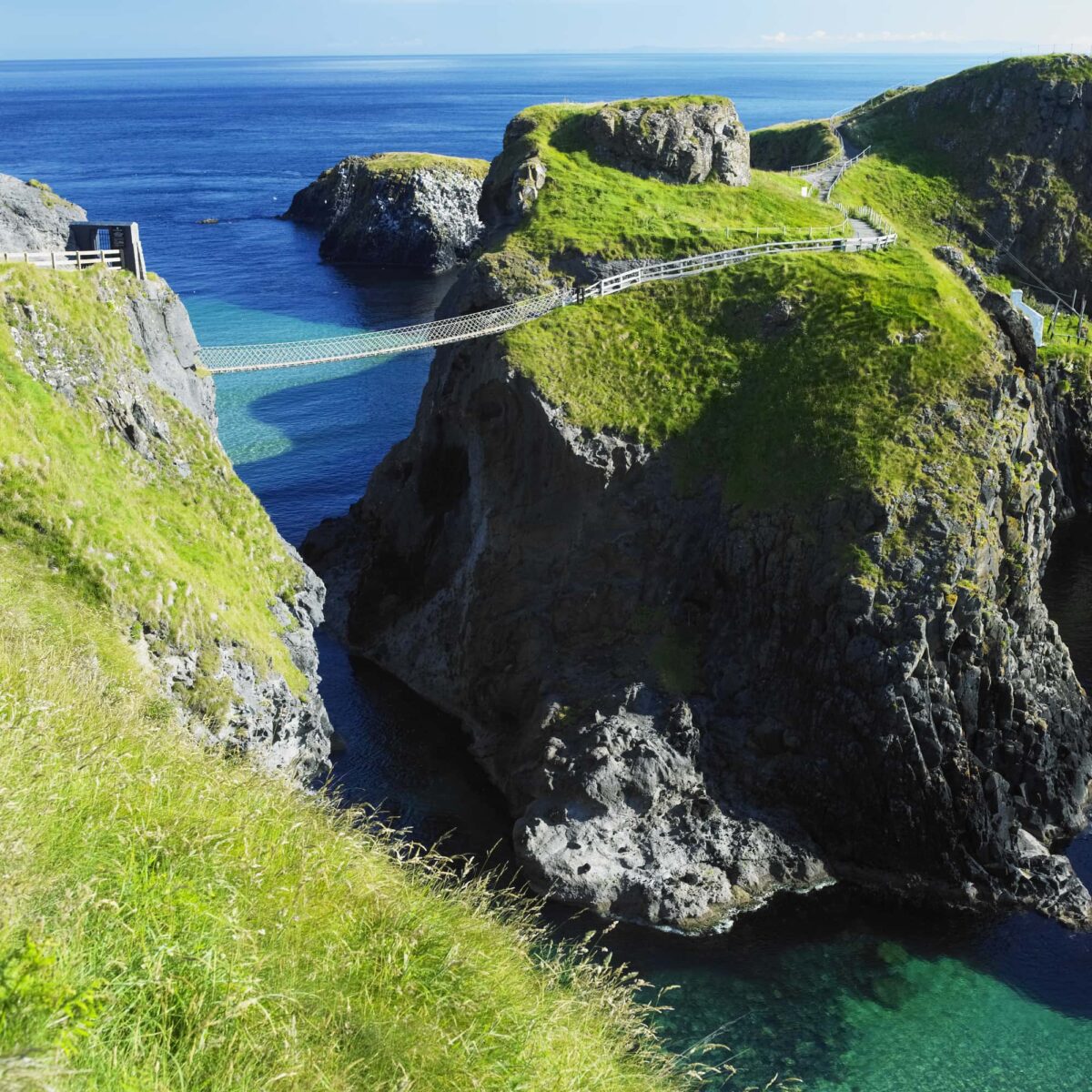
I highly recommend picking up a Heritage Card when you visit Ireland and if you get an
- Stunning 9 Glens of Antrim Northern Ireland's Causeway Coast
- The Glens of Antrim Map
- The 9 Glens of Antrim on the Causeway Coastal route
- Frequently Asked Questions about the 9 Glens of Antrim
- What are the 9 Glens of Antrim?
- Where are the 9 Glens of Antrim located?
- What is the significance of the 9 Glens of Antrim?
- Which are the most famous glens in Antrim?
- Can you visit Glenarm Castle in the 9 Glens of Antrim?
- Are there any waterfalls in the 9 Glens of Antrim?
- What outdoor activities can you do in the 9 Glens of Antrim?
- What are the Glens of Antrim?
- Where do the Glens of Antrim begin?
- The 9 Glens of Antrim – stories, legends and History
- Volcanoes in N. Ireland
- Glens of Antrim best hotel
60 Best Northern Ireland tourist attractions
The Glens of Antrim Map
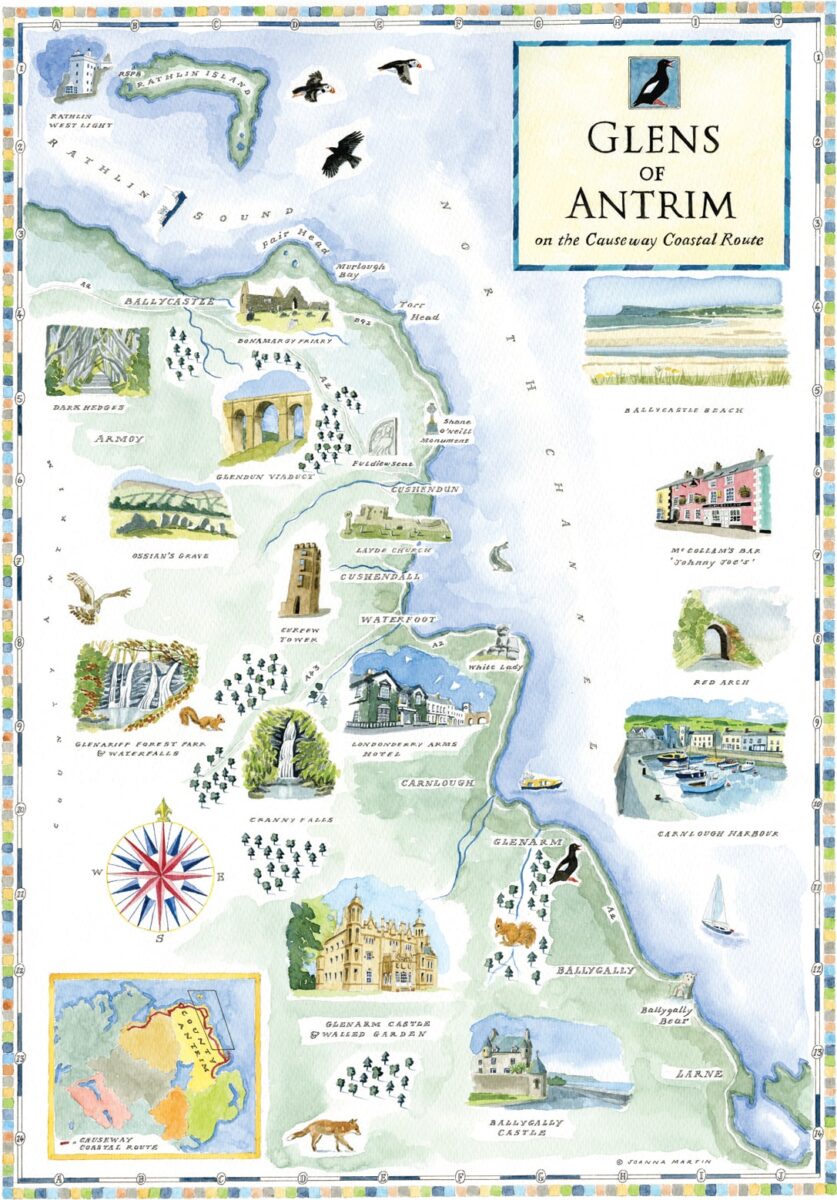
This beautiful interactive map is available online here if you go to the Glens Causeway Coast website you can click on each of the locations and see the history and areas of interest.
The 9 Glens of Antrim on the Causeway Coastal route
- Glentaisie
- Glendun
- Glenshesk
- Glencorp
- Glenaan
- Glenballyeamon
- Glenarm
- Glencloy
- Glenarrif
Frequently Asked Questions about the 9 Glens of Antrim
What are the 9 Glens of Antrim?
The 9 Glens of Antrim are a collection of picturesque valleys that radiate from the Antrim Plateau to the coast of County Antrim, Northern Ireland. Each glen has its own unique charm and beauty.
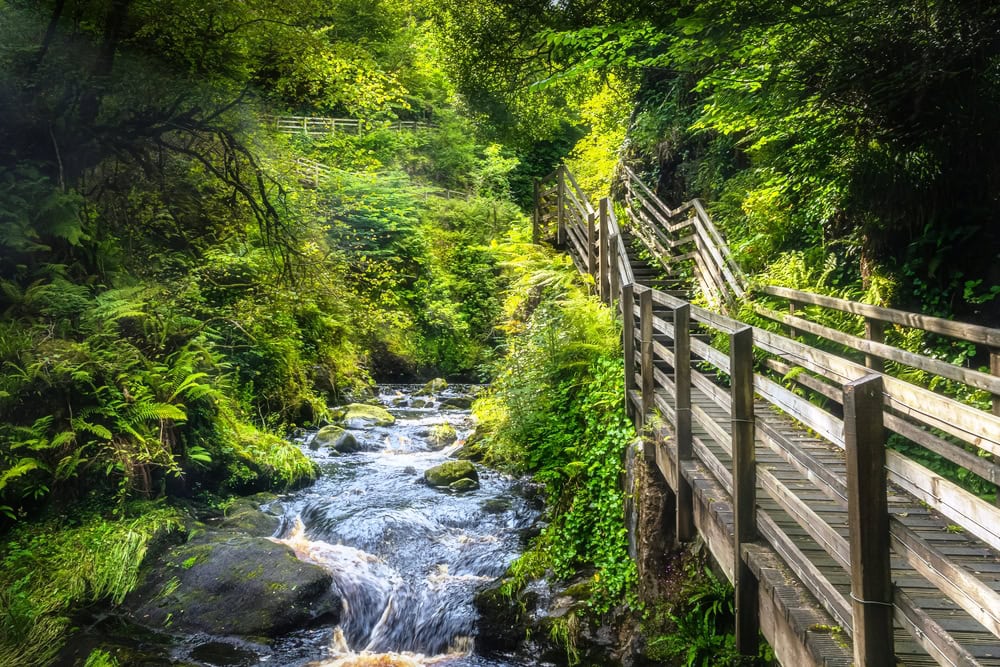
Where are the 9 Glens of Antrim located?
The 9 Glens of Antrim are located in Northern Ireland, specifically in the north of County Antrim. They span from the Antrim Plateau to the stunning Antrim Coast, along the Causeway Coastal Route.
What is the significance of the 9 Glens of Antrim?
The 9 Glens of Antrim are considered a natural attraction in Northern Ireland, known for their scenic beauty and cultural heritage. They form part of the Area of Outstanding Natural Beauty along the Antrim Coast.
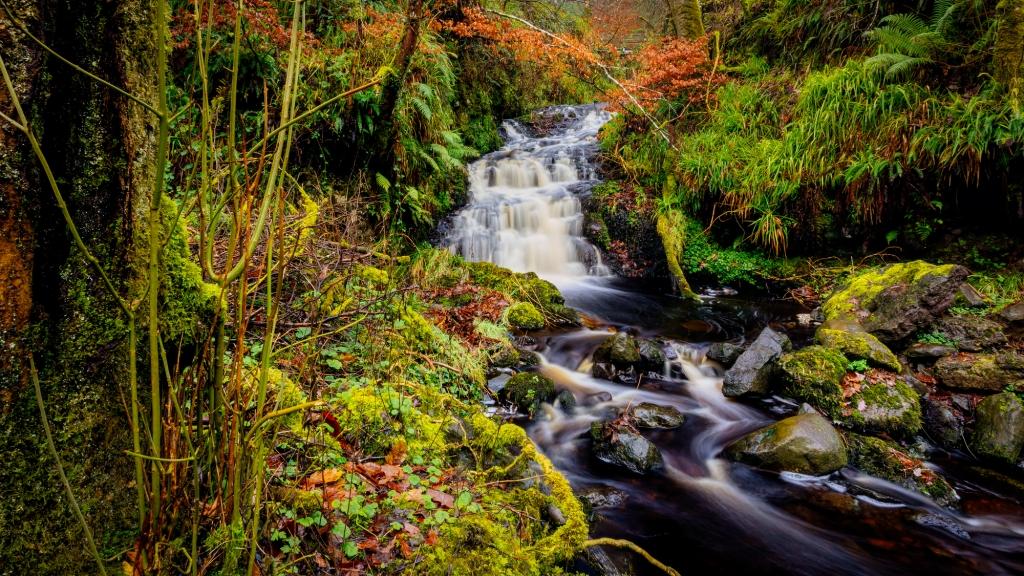
Which are the most famous glens in Antrim?
Some of the most well-known glens in Antrim include Glenariff, Glenarm, Cushendall, and Carnlough. These coastal valleys offer stunning views and are popular tourist destinations.
Can you visit Glenarm Castle in the 9 Glens of Antrim?
Yes, you can visit Glenarm Castle, which is located in one of the glens of Antrim. The castle and its gardens are open to the public and offer a glimpse into the history of the area.
Are there any waterfalls in the 9 Glens of Antrim?
Yes, the 9 Glens of Antrim are home to several waterfalls, with Waterfoot being a notable location known for its cascading waters and natural beauty.
What outdoor activities can you do in the 9 Glens of Antrim?
You could visit the caves of Cushendun where filming for the Game of Thrones took place, or how about a hike in the Glenariff Forest Park to visit the waterfalls? You could do some watersports at Ballycastle and visit the Glenarm Castle and Gardens.
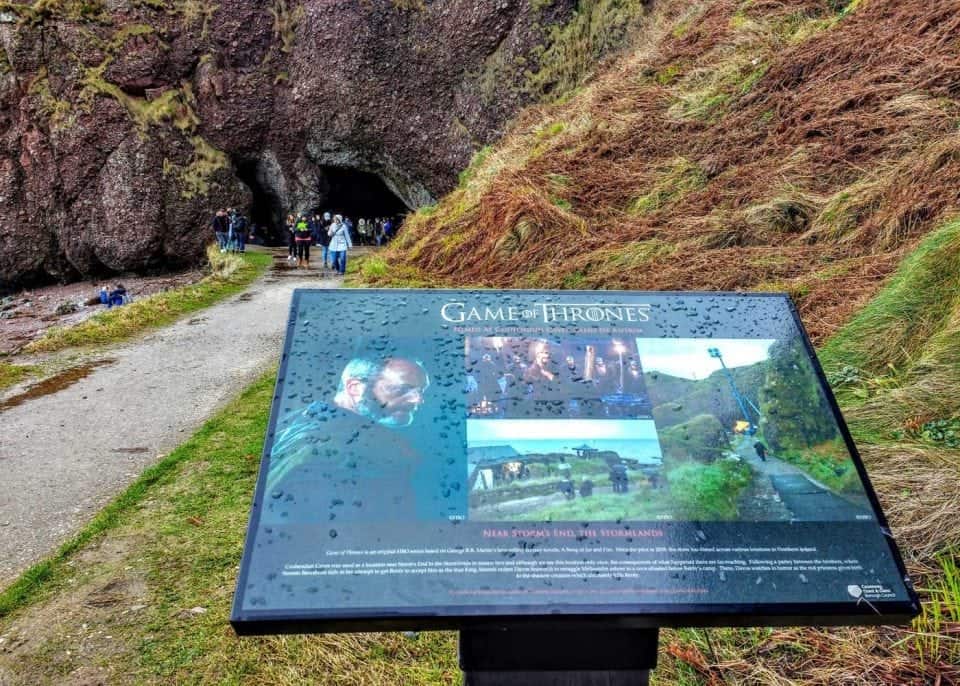
Members of my family have “discussed” their favourite aspects of N. Ireland for many years. For my Uncle Arthur, it was always the Glens of Antrim. I have to add here that they pronounce it Ant – Rim…lol..that Northern Irish accent ya know. My dad was always a fan of the rocks and fishing at Port Stewart, he spent many happy years there fishing as a kid. Personally, I am in complete awe of both areas. The nine Glens of Antrim have held my heart for many years and I marvel at their stunning beauty.
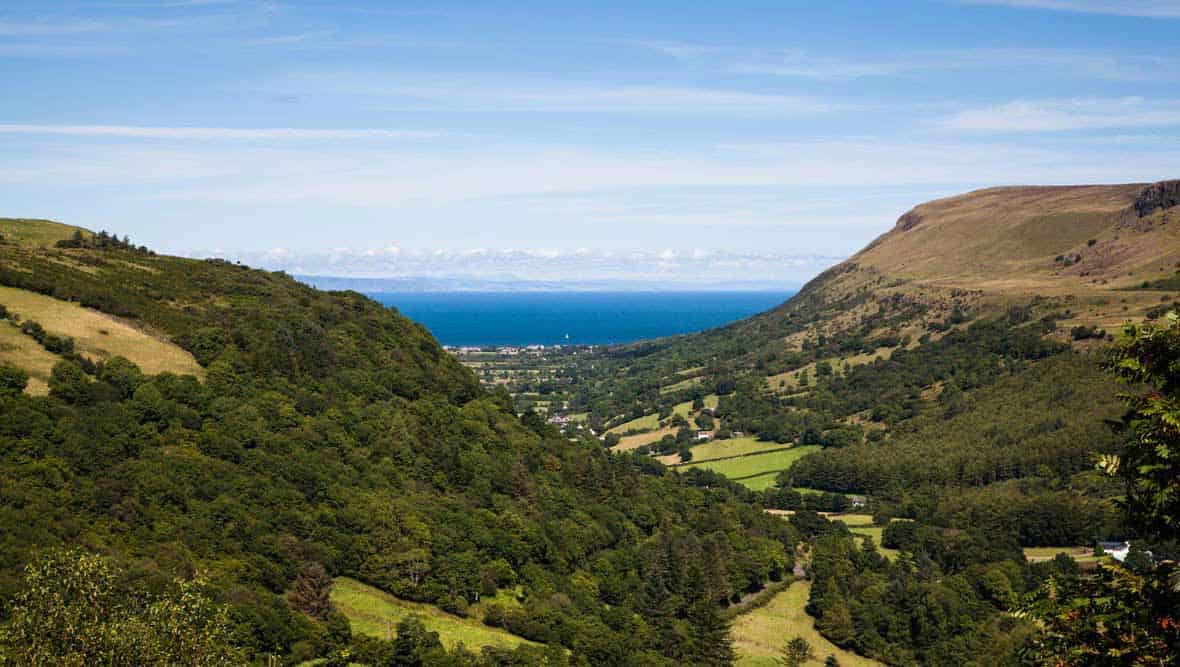
What are the Glens of Antrim?
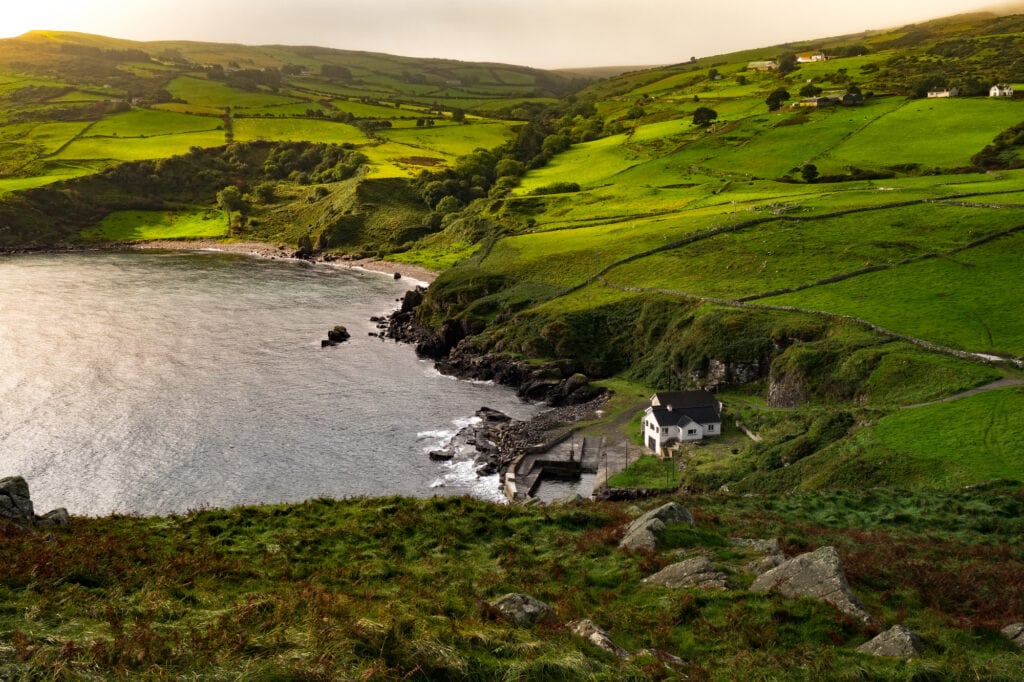
The Glens of Antrim were formed over 55-60 million years ago by the glaciers moving over the Northern coast of Ireland during the last ice age. The landscape contains red sandstone in Red Bay, black basalt in Black Cave and grey clay is found in White Bay.
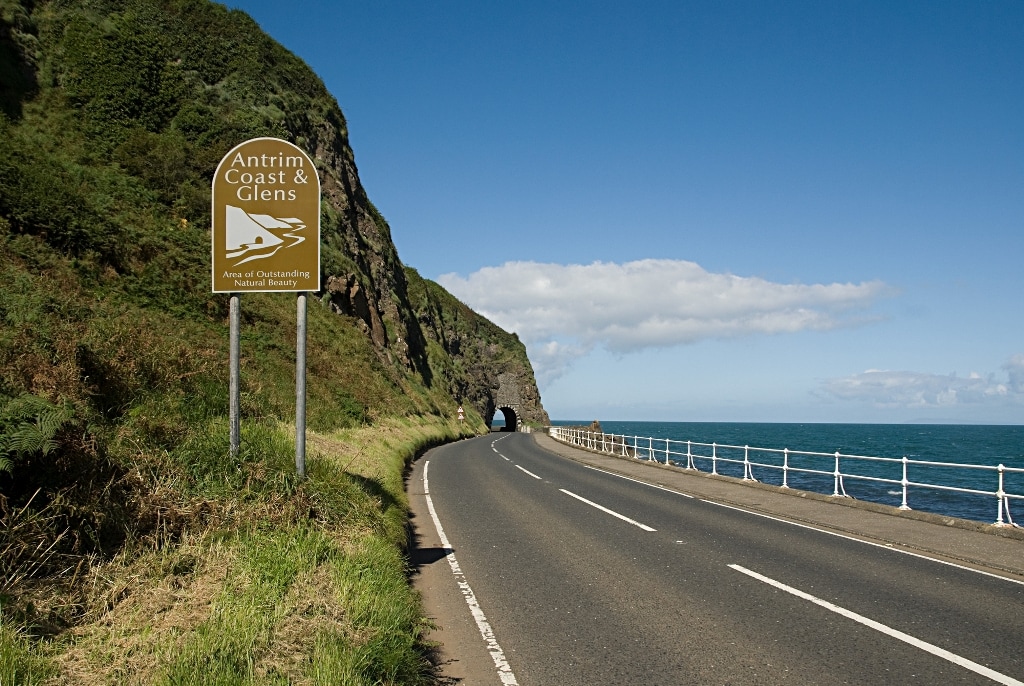
Where do the Glens of Antrim begin?
The Nine Glens of Antrim run from Larne in County Antrim, which is on the east coast of Ireland almost a direct run from Ballymena where my family hails from. We begin our route through the Glens of Antrim from here as the Glens begin just to the north of Larne on the edge of the Antrim Plateau where the glacial valleys of the glens sweep down to the sea. From Larne, you can see the Mull of Kintyre across the stunning sweep of the North Channel of Ireland. This was the route that many Scots took when the plantation of Ulster began.
From Larne the rugged cliffs of the east of Ireland stretch towards the north for over 80 miles – these cliffs are broken only by the nine deep glens of Antrim. Riddled with stories, legends, ghosts, castles and the remains of churches and graveyards the Glens encompass a vast range of incredible scenery, diverse wildlife and bird habitats and beauty beyond anything you have ever seen before. Each of the Glens has a name and a history as you can read here:
The 9 Glens of Antrim – stories, legends and History
Glentaisie
This Glen is named for a Princess. Taisie was the daughter of the King of Rathlin Island – King Dorm. Glentaisie is around 8 km long and is the farthest north of all the nine glens. It can be found on the way to Ballycastle on the western side of the Knocklayd Mountains.
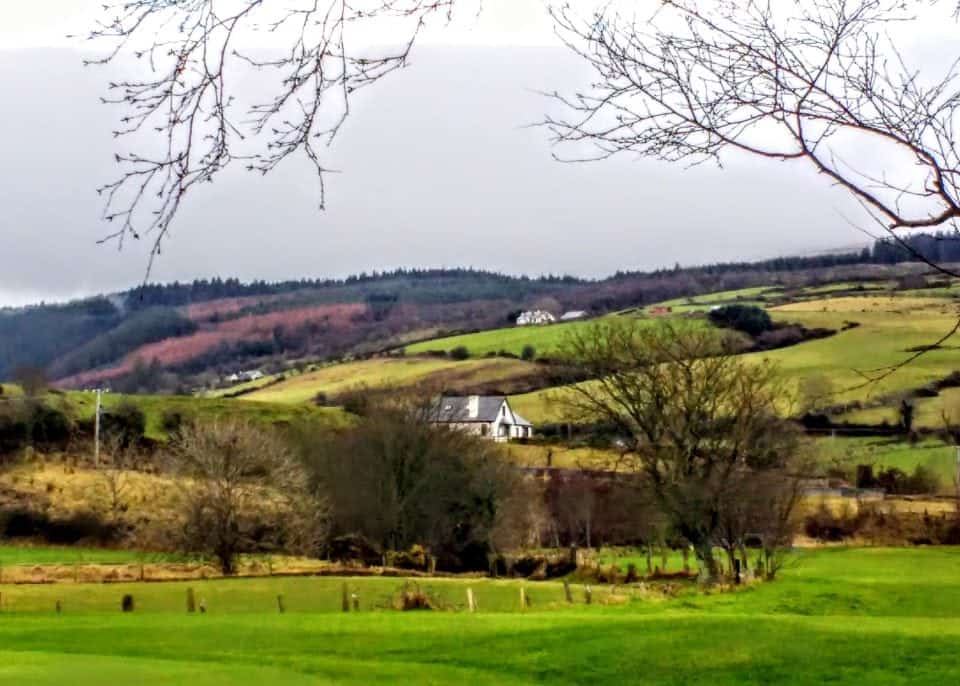
The legend of Glentaisie is that of ‘The Children of Lir’, who were turned into swans by Aiofe the jealous second wife of their father. They were cursed to wander for 900 years singing to all who would listen. The curse was lifted when St. Patrick came to Ireland and brought Christianity with him. It was the sound of the Christian bells that broke the curse.
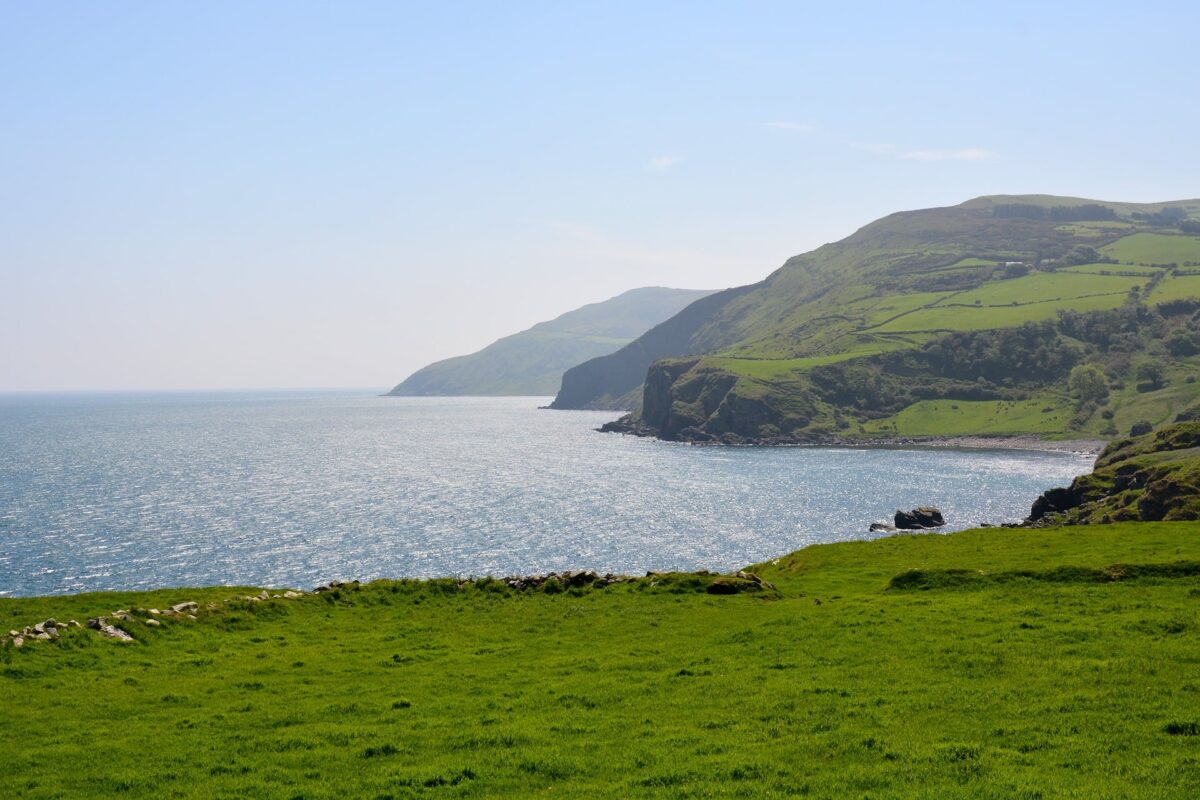
In 1565, there was a great battle in the Glen between the O’Neills and the Scottish MacDonnells. Sorley Boy MacDonnell had called in reinforcements to support his efforts in Antrim against the O’Neills. The battle resulted in Sorley boy’s brother James and Angus’s deaths and Sorley boy was taken, prisoner.
Glendun
Glendun holds many secrets including “The Altar in the Wood which is hidden in Gregagh Wood. This altar is a rock carved with a crucifixion scene and it dates to the 16th century when the penal laws forced Catholics to attend mass in secret. Glendun’s name means ‘brown glen’ it is a deeply peaceful place with the largest area of woodland in Northern Ireland.
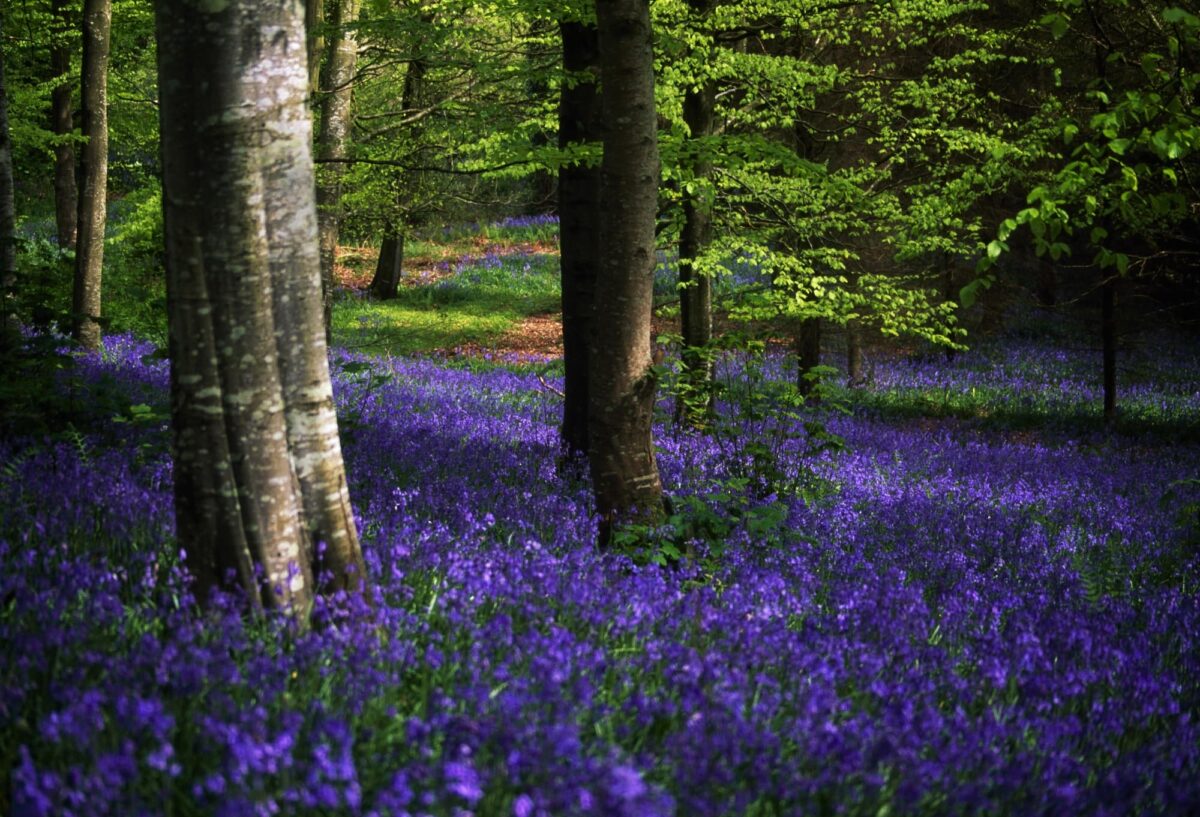
Glenshesk
Courtesy of Laverty Aerial check out their youtube and Facebook channels for more great photos
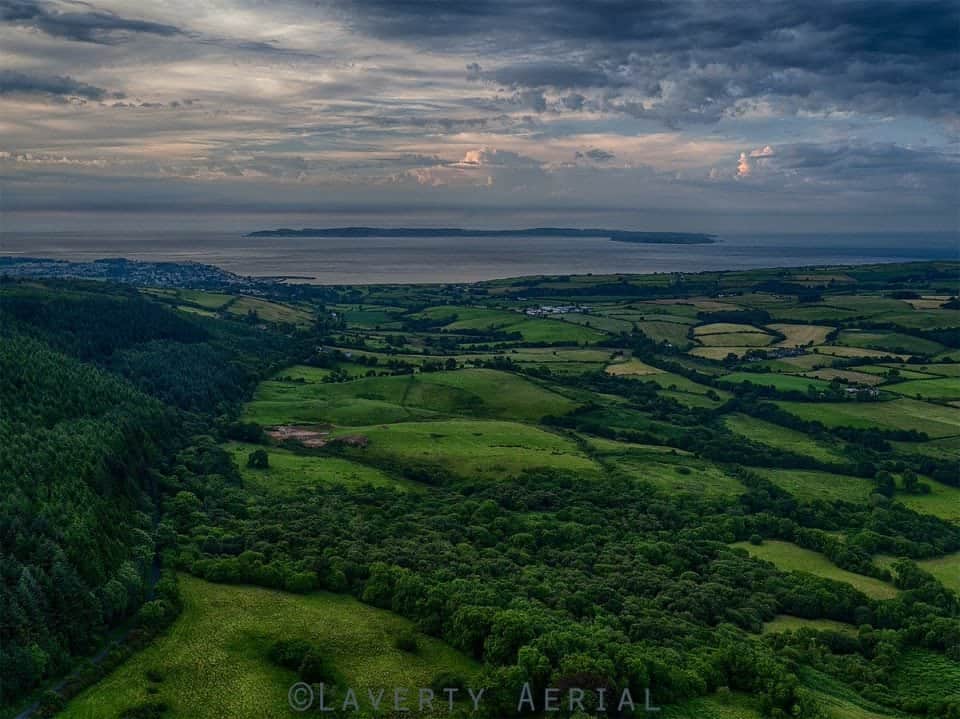
Glenshesk opens out to the sea near Ballycastle with superb views of Rathlin Island and the Mull of Kintyre, which can be spotted on clear days. Glenshesk means the “glen of sedge” or reeds and it is a wild and untamed area.
Just outside Ballycastle lies the ruin of Bunamargy Friary, which is famous for its “Black Nun”. The nun wished to be buried at the entranceway of the chapel so that “she might be trodden under the feet of all who entered”. Her grave is marked by a round holed cross the only one of its kind in Ireland.
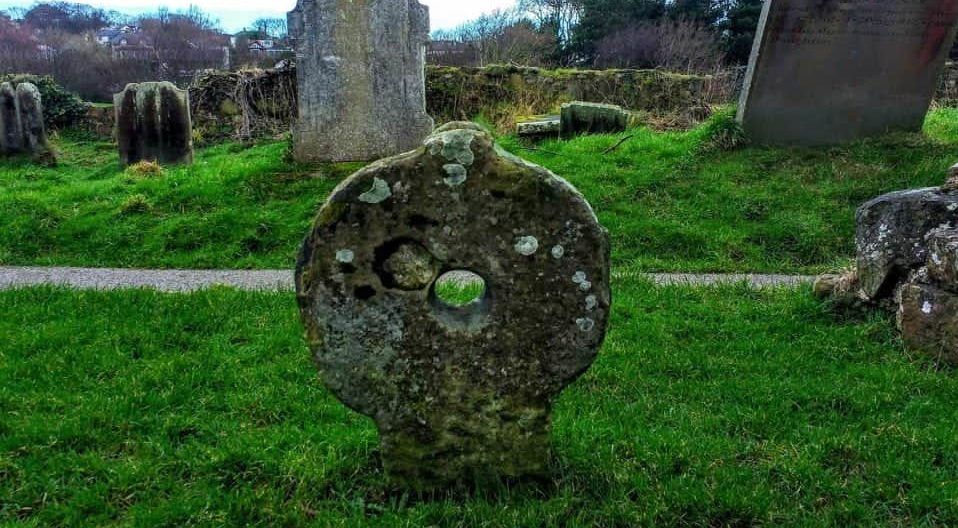
Glencorp
Glencorp means the “glen of the dead” or “glen of the bodies”. More than likely because of the history of early Christian farmsteads and raths that were often attacked and only the bodies remained. There is a mound called the “Fort” in Fainaglass but it has now been identified as a Bronze Age barrow burial mound that dates from 2500 to 500BC.
Glenaan
Glenaan means the “glen of the little fords” and there are many remains of wallsteads (ruined walls of an old house) and the abandoned village of Knockban, which was deserted in the 19th century. There is no farming left in the area although peat is still cut by hand for the fires, the self-sufficiency of the past is long gone.
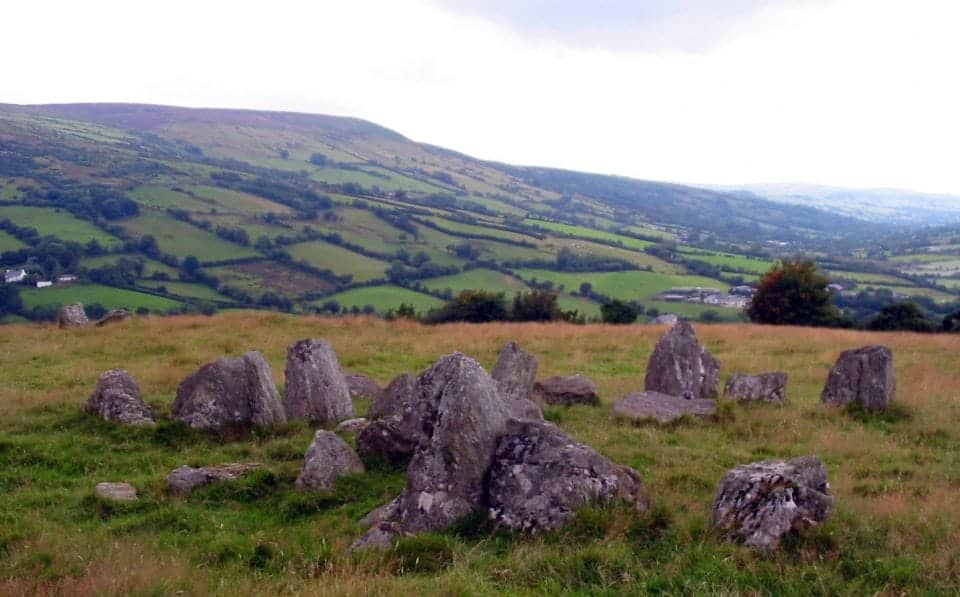
This glen is also the site of Ossian’s Grave. The grave is a double-chambered horned cairn. Legend has it that Ossian was a great poet and warrior who was the son of Finn, the leader of the Fianna brotherhood. We attempted many years ago to find Ossian’s grave but ended up in a field of sheep with nothing to be seen. I would imagine that today it would be better marked and easier to find.
Glenballyemon
This Glen’s name simply means the “Glen of Eamon”. It is often called the heart of the Glens this deep, wide glen sweeps down towards the village of Cushendall, often called the heart of the glens. Due to its preponderance of beautiful waterfalls in the Glen Cushendall was one of the first places in Ireland to have electricity generated by the rushing waters.
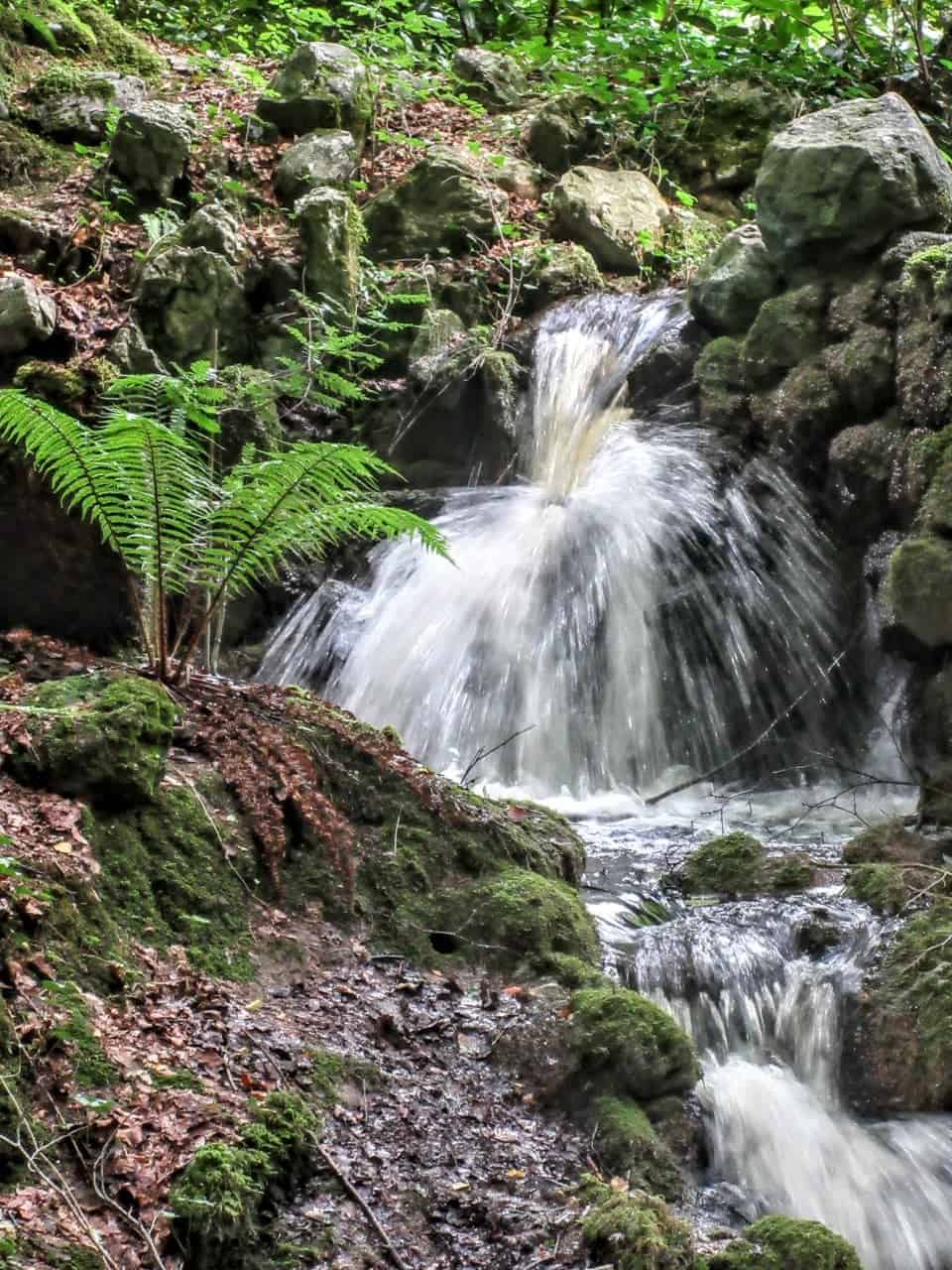
The Glen flows down the slopes of Trostan Mountain, which is the highest mountain in County Antrim, between Lurigethan and Tievebulliagh. There is a promontory fort on the summit of Lurigethan that is enclosed by a series of ditches and banks. There is also a famous Stone Age Flint Factory where many fine examples of axe heads have been uncovered.
Glenarm
The “Glen of the Army” is the most southerly of the glens and has at its end the town of Glenarm. Glenarm is also home to the estate of the Earl of Antrim. This area is home to the MacDonnells since the 1600s. The body of Shane O’Neill (from the Battle at Glentaisie) is said to rest here, but it is without his head which legend has it was sent to Dublin Castle to be displayed on a pike. This is also one of the many locations for the Game of Thrones HBO series.
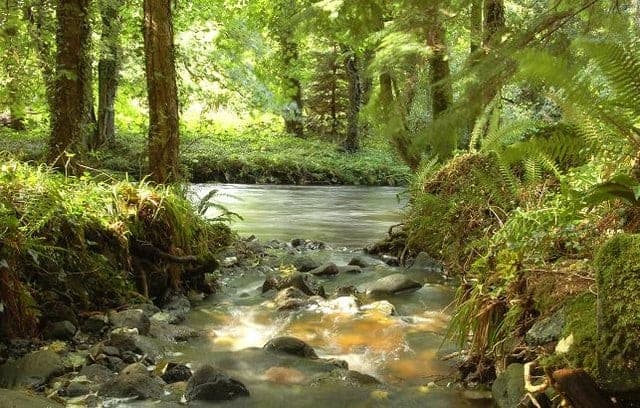
Glenarm Castle, dating from around 1750 with early 19th century alterations (Restored around 1825) lies near the village and the Antrim estate extends up the Glen for about four miles on both sides of the river. Near the castle can be traced to the remains of the old church Templeoughter, the upper church.
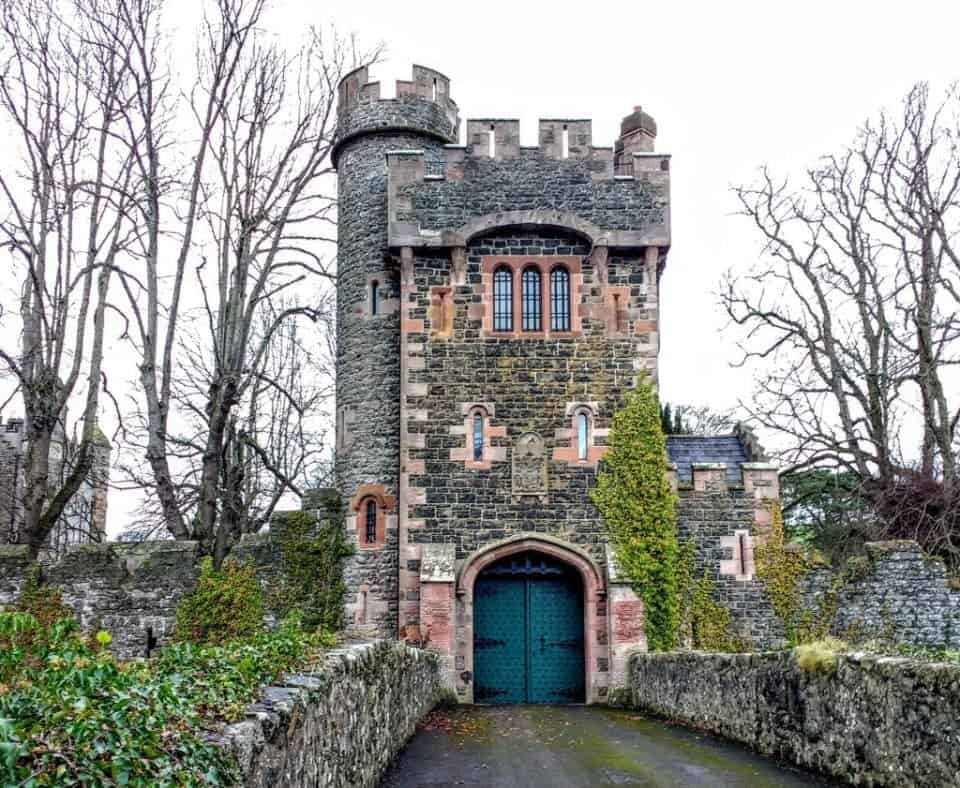
There are a few Iron Age raths and souterrains in the Glen and some late Stone Age Wedge Tombs that indicate settlements for thousands of years. A souterrain is an underground burial chamber that you are able to tour with a guide. The chamber is on private land so the farm owner Tommy conducts these tours for £15, which includes snacks.
Glencloy
Glencloy is shaped like a sword and its name means the glen of “the dykes”. The glen sweeps out to the Irish Sea at Carnlough and is surrounded by white chalk quarries with the distinctive landmark of the White Arch over the coast road near the harbour area. Excavations nearby have discovered that the area has been occupied from around 4000BC. There are Norman mottes or mounds that once held the forts of Doonan and Dunga Mollan.
Glencloy is home to the beautiful and dramatic Drumnasle waterfalls that are approached by a passage called ‘The Goats Parlour’. At the end of this path is Tubberdoney, a blessed well believed to cure eye-related problems.
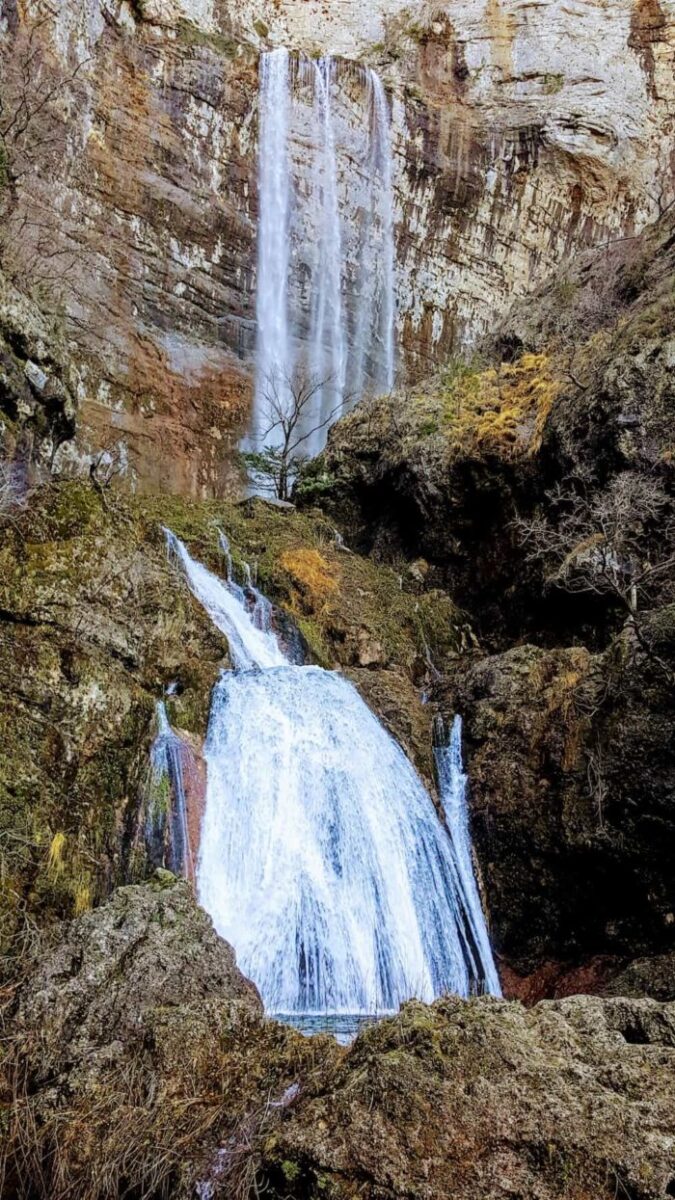
From the great headlands of Drumnasole (‘the ridge of light’), the Antrim Scots communicated with beacon fires to their kinsmen across the sea of Moyle.
Well hidden from the passing road is a place called Garron Tower or “bridbuilt” which was the summer home of the Marchioness of Londonderry. The Marchioness built the harbour at Carnlough, which was used to ship limestone from the Glencloy quarries for many years until silting in the harbour became a problem for the deeper-hulled boats.
Glenariff
Also known as the “Queen of the Glens” Glenariff, which means ‘Glen of the plough’, is a perfect u-shaped valley with ladder farms, spectacular waterfalls, and peat-stained rivers and streams. The glen runs down to the sea at the tiny village of Waterfoot. The Glenarrif Forest Park has some jaw-dropping views across to the Scottish coast and an incredible walking path following the Moyle way up to Ballycastle.
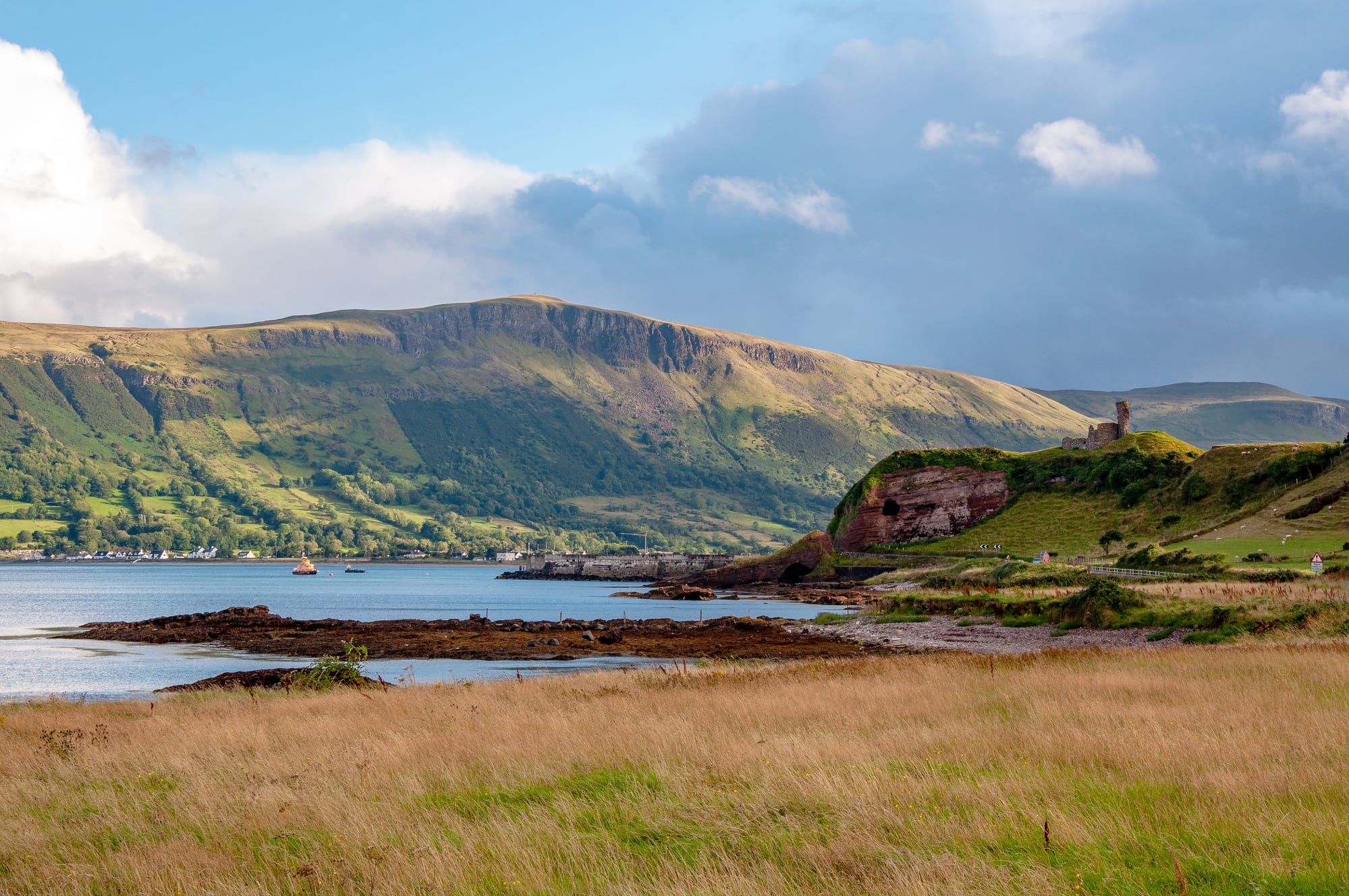
You can also see some spectacular views of the ruin of Red Bay Castle which was destroyed by Cromwell in 1652.
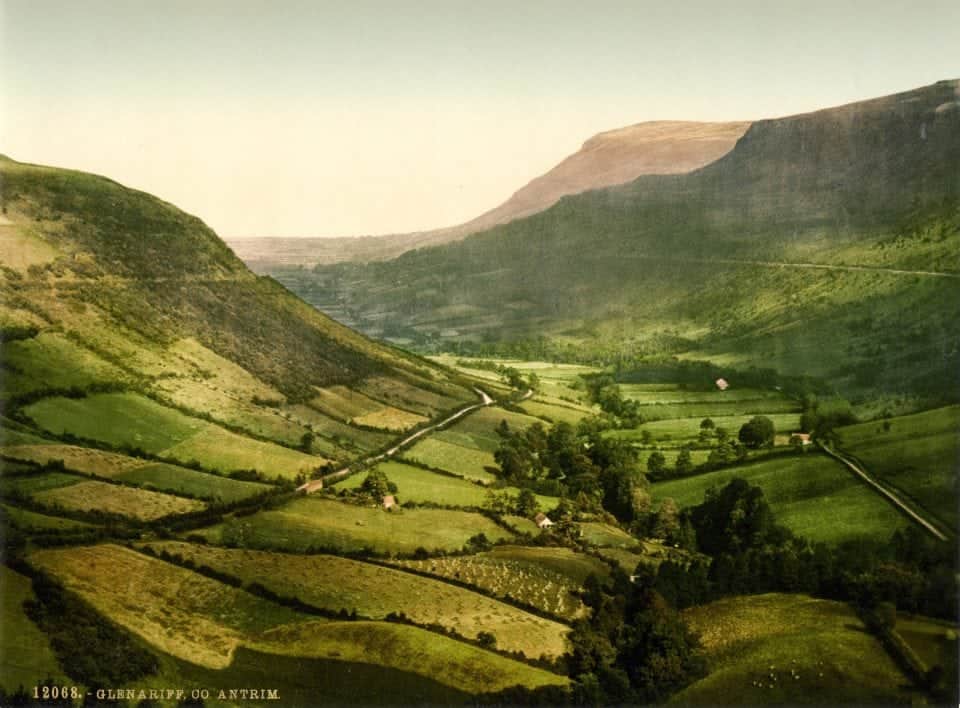
Volcanoes in N. Ireland
The volcanoes that formed N. Ireland’s mountains are now long-extinct and worn down but the most famous Slemish Mountain can be spotted from many places along the Causeway Coast. Slemish is an old volcano and the first known Irish home of Saint Patrick. Located in County Antrim it rises about 1500 feet (437 metres) above the surrounding plain, and it is actually the central core of an extinct volcano.
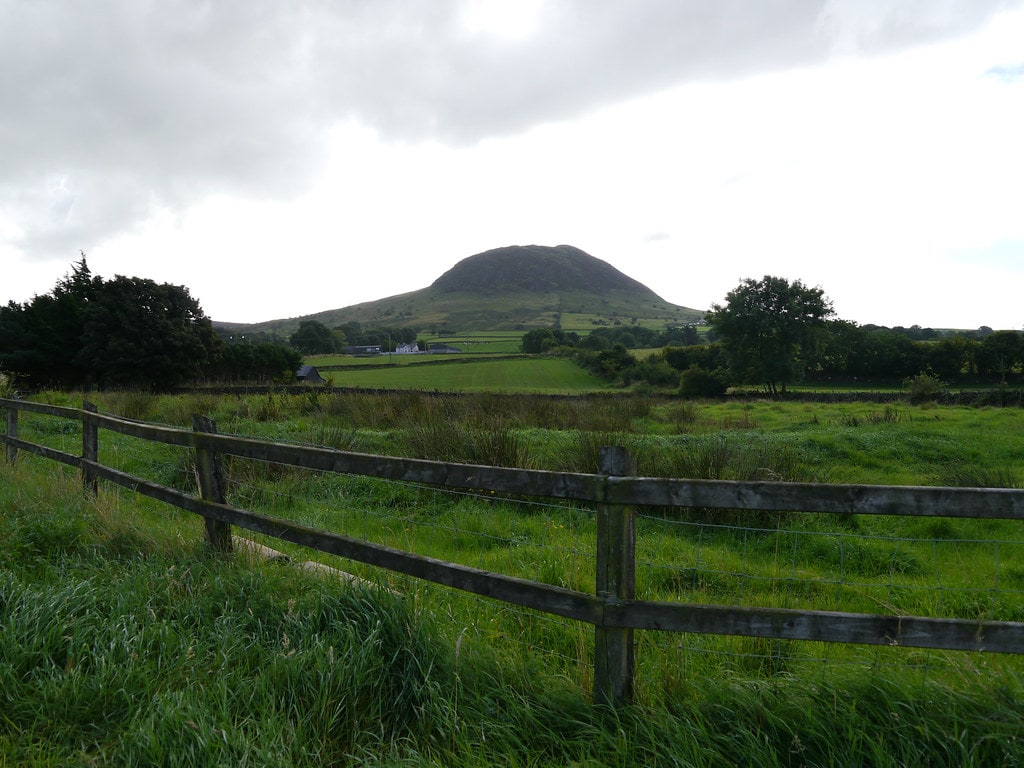
Glens of Antrim best hotel
The tour of the Glens will end around Ballygally where you should be sure to check out the Ghost, which has been around for 400 years. Reputed to be Lady Isabella Shaw who was locked in her room by her husband James for not producing a male heir.
The tale says that she had given birth to a girl and while trying to escape from her room to find the child she fell from the tower window of the Castle. If you are feeling very brave, you can book the
CLICK HERE TO BOOK THE BALLYGALLY HOTEL
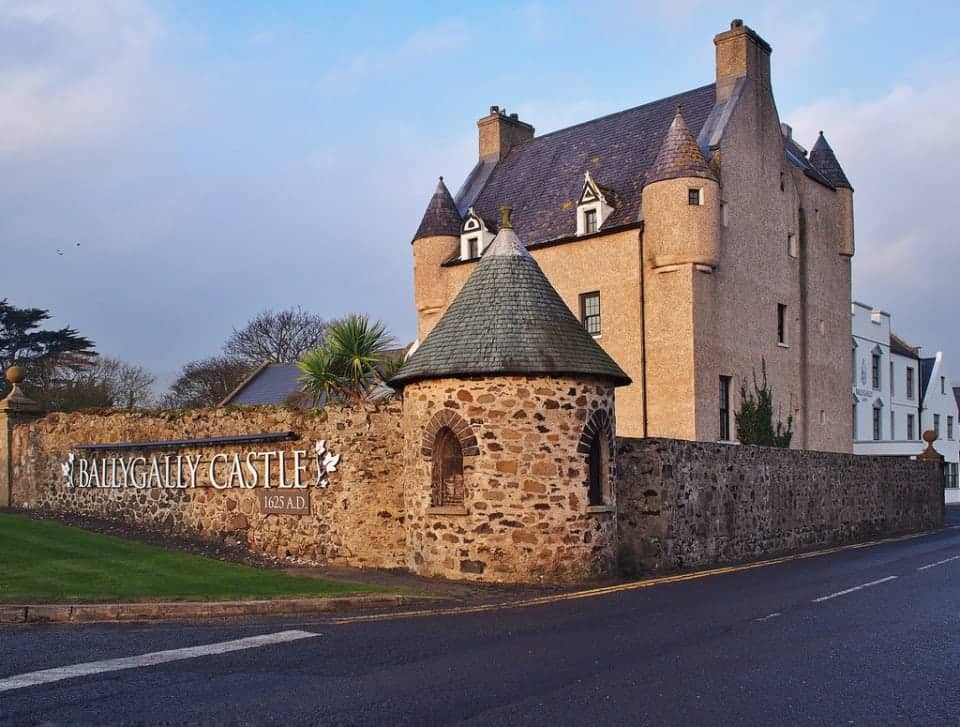
Don’t forget to visit Mussenden Temple and Demense when in Country Derry
Festivals in the Glens of Antrim
The Glens host several festivals throughout the year if you get a chance to take them in grab it. There is the Feis of the Glens, which has been held since 1904 this festival is the most famous cultural event in The Glens of Antrim and has been running since 1904. It is a celebration of arts and crafts, field events, language, poetry, singing and dancing which takes place over various dates throughout June and July.
The Dalriada Festival is held in the summer at the Glenarm Estate. One of Ireland’s biggest cultural and heritage festivals celebrating the unique sporting, food and music cultures of both Ireland and Scotland. The Dalriada Festival reflects this shared heritage right back to the ancient kingdom of Dál Riada and beyond.

The Festival aims to share local traditions and talent and renew a passion and belief in our own local area, its people and cultural heritage. There is entertainment for all. From Fine foods, arts and crafts, open-air concerts and live music to children’s entertainment, fun and games.
The Glens of Antrim have an abundance of quality accommodations to suit all needs. To find a comfortable place to put your head down visit Discover Northern Ireland for information. You can also contact Visit Causeway Coast and Glens and many of the villages and towns along the route have tourist offices or heritage centres that would be pleased to provide you with as much information as you need.
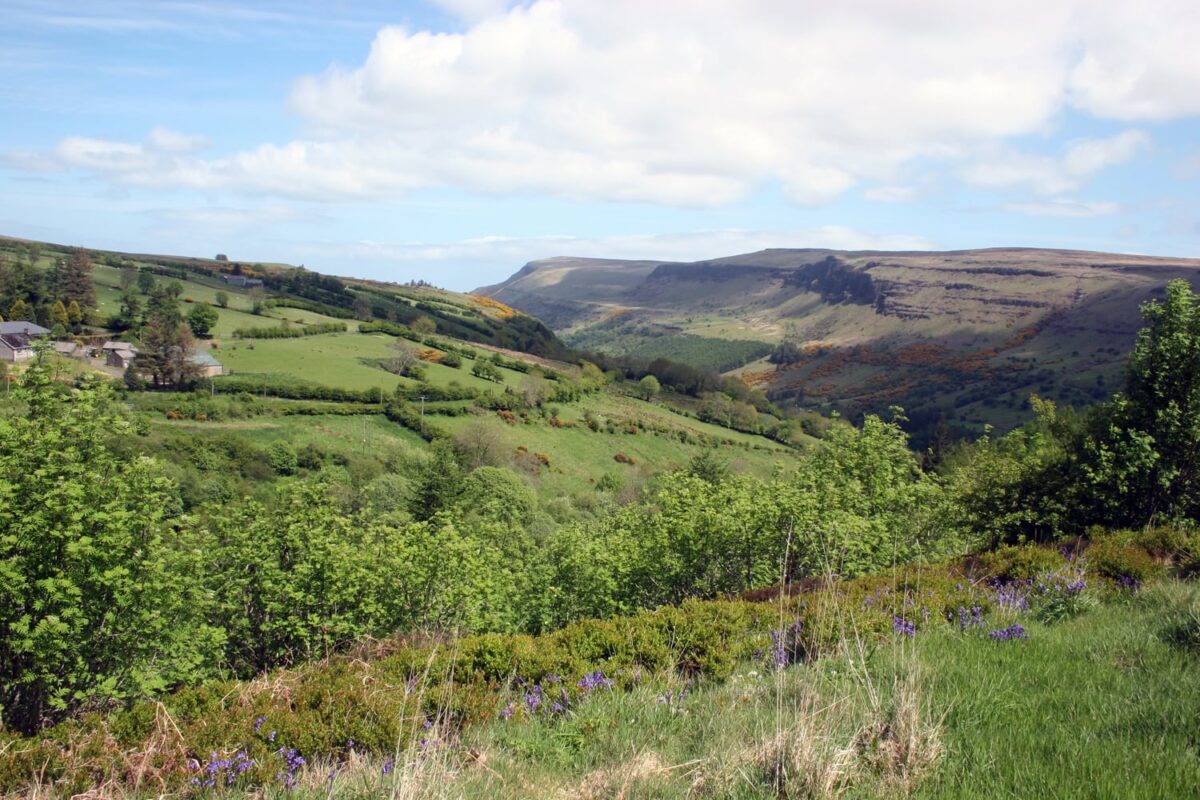
Visiting the Glens of Antrim is an experience that should not be missed. From its breathtaking landscapes to its rich history and culture, this region has something for everyone. Whether you’re looking for adventure or relaxation, the Glens offer a wide range of activities and attractions. Whether it’s hiking along rugged coastlines or exploring ancient ruins and castles, there is always something new to discover in this beautiful part of Ireland. So why not plan your next trip to the Glens of Antrim today? You won’t regret it! Did you have a favourite, Glen?
You may also like
101 Landmarks in Northern Ireland
60 Best Northern Ireland tourist attractions
Game of Thrones Doors Northern Ireland
Epic Game of Thrones Ireland road trip
Ultimate Wild Atlantic Way Route
Ireland’s Ancient East – an epic road trip

